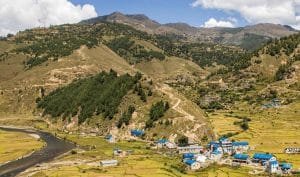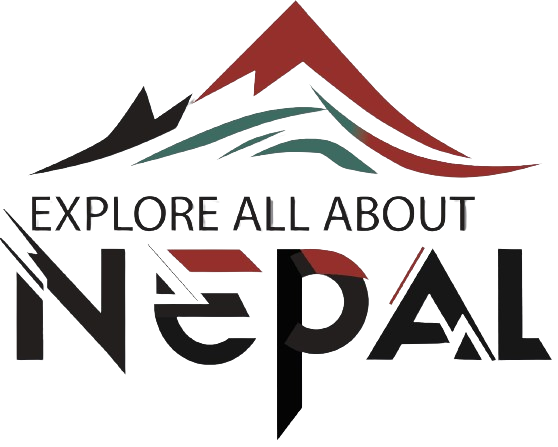Sinja Valley is a hidden gem , Nestled in the remote and picturesque Jumla District of western Nepal steeped in history, culture, and natural beauty. Renowned as the birthplace of the Nepali (Khas) language, Sinja Valley is a treasure trove of historical relics, ancient inscriptions, and breathtaking landscapes. This UNESCO World Heritage Site is an off-the-beaten-path destination perfect for history enthusiasts, nature lovers, and adventure seekers.
Here’s a detailed guide to why Sinja Valley deserves a spot on your travel itinerary, along with its key attractions, historical significance, estimated budget, and tips for getting there.

Historical Significance of Sinja Valley
Sinja Valley holds immense historical and cultural importance in Nepal’s heritage:
- The Origin of the Nepali Language:
- Sinja Valley is considered the birthplace of the Khas language, which evolved into the modern Nepali language.
- The ancient Khas inscriptions, dating back to the 13th and 14th centuries, were discovered here, providing evidence of its linguistic legacy.
- Capital of the Khas Kingdom:
- During the 12th to 14th centuries, Sinja Valley served as the capital of the powerful Khas Malla Kingdom. This kingdom played a pivotal role in shaping the political and cultural landscape of Nepal.
- UNESCO World Heritage Site:
- Recognized for its unique historical significance, Sinja Valley was designated as a UNESCO World Heritage Site for its contribution to the preservation of ancient language, scripts, and culture.
- Archaeological Discoveries:
- The valley is home to ancient palaces, stone water spouts, temples, and stone inscriptions that narrate the story of the Khas people and their rich legacy.
Key Attractions in Sinja Valley
1. Historical Sites and Ancient Inscriptions
- Explore the ruins of palaces and temples that once belonged to the Khas Malla rulers.
- Visit Dhauli Bhitti, where inscriptions in the Khas language have been found, marking the linguistic origins of Nepali.
2. Kanaksundari Temple
- This ancient temple is dedicated to Goddess Kanaksundari and is an important pilgrimage site for Hindus. Its architecture reflects the medieval style of the Khas Malla Kingdom.
3. Natural Hot Springs
- Relax in the natural hot springs located in the valley, believed to have therapeutic properties and used by locals for centuries.
4. Hiking Trails and Scenic Landscapes
- The valley is surrounded by stunning landscapes, including terraced fields, lush forests, and pristine rivers, making it a haven for trekkers and nature lovers.
5. Tila River and Agriculture
- Witness the Tila River flowing through the valley, which sustains the local agricultural economy. The traditional farming practices here reflect the lifestyle of the Khas people.
6. Sinja Khola and Cave Exploration
- Sinja Khola (river) offers opportunities for exploration, and nearby caves contain ancient artifacts, carvings, and relics from the medieval period.
Why Visit Sinja Valley?
- Dive Into Nepal’s Linguistic and Cultural Heritage: Sinja Valley offers a glimpse into the roots of the Nepali language and its evolution.
- Discover Untouched Beauty: Far from bustling cities, the valley provides tranquility, surrounded by natural wonders and serene landscapes.
- Experience Rural Nepal: Engage with the local community, learn about traditional Khas culture, and enjoy authentic rural hospitality.
- Perfect for History Enthusiasts: The ruins, inscriptions, and historical sites make it a paradise for anyone interested in Nepal’s medieval history.
How to Get to Sinja Valley
From Kathmandu:
- By Air:
- Take a flight to Nepalgunj (1 hour, ~$100–$150).
- From Nepalgunj, fly to Jumla Airport (40 minutes, ~$100).
- From Jumla, Sinja Valley is about 20 km and can be reached by local transport or trekking.
- By Road:
- A long yet adventurous road journey from Kathmandu via Surkhet and Jumla (600+ km, ~18–20 hours).
Estimated Budget for Visiting Sinja Valley
| Expense | Estimated Cost (USD) |
|---|---|
| Flight (Round Trip) | $200–300 |
| Local Transportation | $20–50 |
| Accommodation | $10–20 per night (homestays/guesthouses) |
| Food | $5–10 per day |
| Guide Fee (Optional) | $20–30 per day |
| Entry Fees | Minimal or free for most sites |
Total Estimated Cost: $250–400 per person for a 3–4 day trip, depending on transportation and accommodations.
Best Time to Visit Sinja Valley
The best time to visit Sinja Valley is during:
- Spring (March–May): Pleasant weather and blooming flowers enhance the natural beauty.
- Autumn (September–November): Clear skies and moderate temperatures make it ideal for exploring the valley.
Avoid the monsoon season (June–August) as heavy rains can make transportation and trekking challenging.
Travel Tips for Sinja Valley
- Prepare for Remote Travel:
- Sinja Valley is remote with limited facilities, so plan accordingly and carry essentials like snacks, water, and first-aid supplies.
- Engage a Local Guide:
- A guide can help you explore the valley’s historical sites and share fascinating stories about its past.
- Respect Local Culture:
- Dress modestly and follow local customs, especially when visiting temples and religious sites.
- Be Physically Prepared:
- Some trekking and walking are required to explore the valley, so ensure you’re fit for moderate physical activity.
Conclusion
Sinja Valley is more than just a travel destination—it’s a journey back in time to the roots of Nepal’s language, culture, and history. From ancient ruins and inscriptions to breathtaking landscapes and welcoming locals, Sinja Valley offers an unforgettable experience for those willing to explore its hidden wonders. Whether you’re a historian, a trekker, or a cultural enthusiast, visiting Sinja Valley promises to be a unique adventure that connects you to Nepal’s rich heritage.
Plan your trip today and uncover the secrets of this untouched gem in western Nepal!


